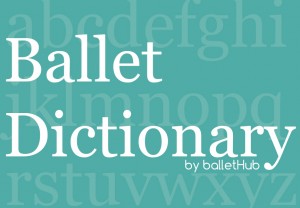Line is a classical ballet term that describes the outline of a dancer’s complete body while performing steps or poses. Striving for a “good line” is very essential to the success of a professional dancer or advanced student.
The term line is sometimes confused with an actual line, meaning how most people use line as “from point a to point b.” Line in classical ballet is much different. When speaking generally about a dancer’s line, it is meant that you are speaking about the complete look, from toes to top of the head and everything in between. When speaking specifically about “the line of the foot,” you are then speaking specifically about the connection and shape between multiple key points of placement for the toes, ankle, shape of the foot and its relation to the calf.
Understanding line is one of the most important things for a classical ballet dancer and a dancer’s personal understanding usually develops throughout their training. It is one of those aspects of ballet that “you don’t know how much you don’t know” as you are learning the basics, and even advanced, steps and technique because a dancer is usually trying to concentrate on doing a step, staying on balance, or trying to look generally presentable. It would not be uncommon for a high-school ballet student to have very little understanding of classical ballet line.
The term line in classical ballet is often misused, as said above, as a line from point a to point b. For example, the judge’s on the popular TV show “So You Think You Can Dance” are repeat offenders. One judge may say, “And you’ve got beautiful ballet lines…” when they’re talking about how high they hiked up a bent leg that should have been straight with a barely pointed foot. To a properly trained eye, that would not be considered a good line, but the judge may think so simply because of how the leg was and it appeared to “make a line from the top of the dancer’s foot to the other foot.”
A dancer who is likely thinking of their line as they dance, for example, is not just thinking about the first leg being thrown in a grande jeté, but the slight tilt of their head over a second arabesque arm while also thinking that their back hip can’t open too much into a “seca-besque.” If this dancer then had almost every piece of their body in place while in the jeté(not just the points listed above), he or she would then have accomplished a good line.
After all that was said above, it is important to note that a dancer can’t get too obsessed with line. Since ballet is anatomically very awkward for most people, it is almost impossible for most dancers to have perfect line. That being said, its okay not to have a perfect line, but it also can’t be non-existent for a professional dancer. It is very often the thing that sets a professional and a student apart. The idea is to strive for a good line, not necessarily a perfect line.
